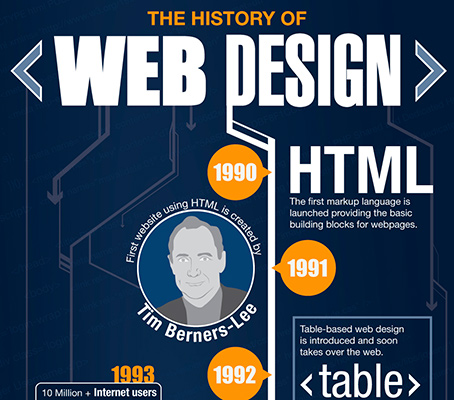Fascinated In Learning Exactly How Web Site Style Has Progressed Throughout The Years? Explore The Journey From Basic, Uncomplicated Designs To User-Centric Interfaces That Focus On The Site Visitor'S Experience
Fascinated In Learning Exactly How Web Site Style Has Progressed Throughout The Years? Explore The Journey From Basic, Uncomplicated Designs To User-Centric Interfaces That Focus On The Site Visitor'S Experience
Blog Article
Content Created By-Solis Wong
In the past, web sites were basic and concentrated on info. Recommended Online site was direct, and style was for desktop computers. Currently, customer experience is vital. Information overviews styles for very easy navigating. Receptive formats match different tools. Today, dark mode minimizes pressure, and minimal food selections boost navigation. Interactive attributes involve individuals, and vibrant visuals attract attention. AI integration increases interaction. See exactly how layout has actually developed to enhance your on-line trip.
Early Days of Web Design
In the very early days of web design, simpleness preponderated. Sites were basic, with minimal colors, font styles, and layouts. The emphasis got on supplying information rather than flashy visuals. Users accessed the web through sluggish dial-up connections, so rate and performance were crucial.
Navigation menus were straightforward, usually located at the top or side of the page. Web sites were made for desktop, as mobile browsing wasn't yet prevalent. Web content was king, and developers prioritized simple readability over complex layout components.
HTML was the primary coding language used, and developers needed to function within its restraints. Animations and interactive features were very little contrasted to today's criteria. Websites were fixed, with little vibrant web content or tailored individual experiences.
Surge of User-Focused Design
With the advancement of website layout, a shift in the direction of user-focused design concepts has come to be progressively famous. Today, creating web sites that prioritize individual experience is vital for involving visitors and achieving business goals. https://top5seopluginsforwordpres06161.blog-gold.com/36783399/enhance-your-pay-per-click-projects-by-utilizing-efficient-keyword-research-techniques-that-will-change-your-advertising-and-marketing-efficiency-discover-more-today -focused layout involves understanding the needs, preferences, and habits of your target audience to customize the website's layout, web content, and includes accordingly.
Designers currently perform thorough research, such as user surveys and use testing, to gather insights and responses directly from customers. This data-driven method assists in developing user-friendly navigating, clear calls-to-action, and aesthetically enticing user interfaces that reverberate with site visitors. By placing the customer at the center of the layout process, websites can deliver a much more personalized and delightful experience.
Receptive layout has additionally become a vital element of user-focused design, making certain that websites are enhanced for numerous tools and display sizes. This versatility enhances ease of access and usability, dealing with the diverse means users communicate with internet sites today. Fundamentally, get website content of user-focused style signifies a change towards producing electronic experiences that focus on the needs and expectations of the end user.
Modern Trends in Website Design
Check out the most recent patterns forming web design today. One prominent pattern is dark mode style, using a sleek and modern-day look while decreasing eye stress in low-light environments. One more vital trend is minimalist navigating, streamlining food selections and enhancing individual experience by concentrating on essential elements. Integrating micro-interactions, such as animated buttons or scrolling results, can create a much more interesting and interactive site. Responsive layout continues to be critical, making certain smooth customer experiences throughout various devices. Furthermore, making use of strong typography and asymmetrical designs can add visual interest and draw attention to particular content.
Integrating AI modern technology, like chatbots for consumer support or individualized suggestions, improves individual involvement and enhances processes. Availability has likewise become a considerable pattern, with developers prioritizing comprehensive design techniques to cater to varied user needs. Accepting sustainability by maximizing site performance for rate and performance is another arising fad in web design. Collaborating with user responses and information analytics to iterate and boost design continually is necessary for remaining appropriate in the ever-evolving electronic landscape. By welcoming these modern-day patterns, you can develop an aesthetically attractive, user-friendly site that reverberates with your audience.
Verdict
As you assess the development of web site design from the very early days to currently, you can see how user-focused design has ended up being the driving pressure behind contemporary patterns.
Embrace the trip of change and adaptation in web design, always maintaining the individual experience at the forefront.
Remain existing with the latest patterns and innovations, and never stop advancing your technique to produce visually stunning and user-friendly sites.
Develop, adjust, and produce - the future of website design remains in your hands.
